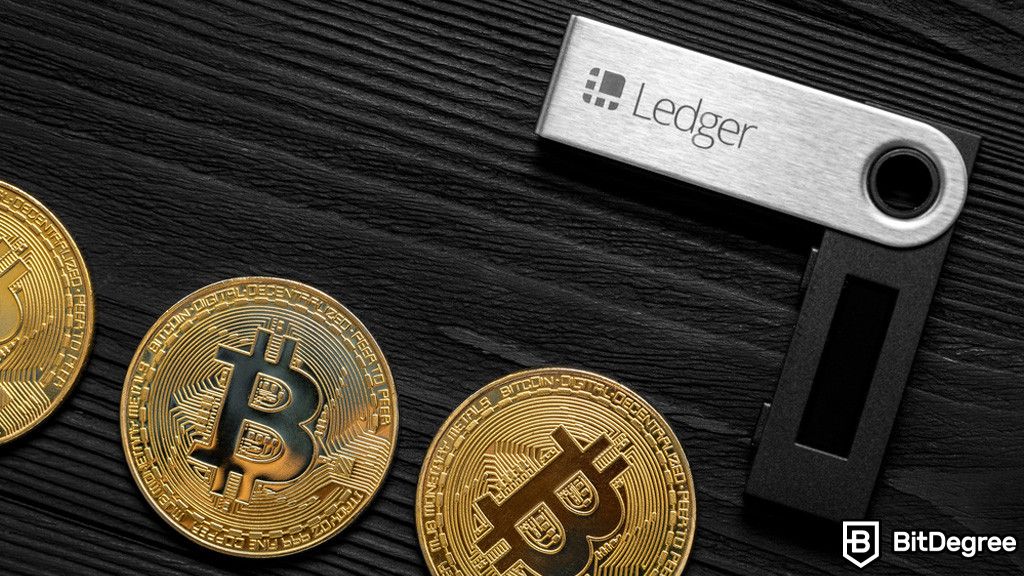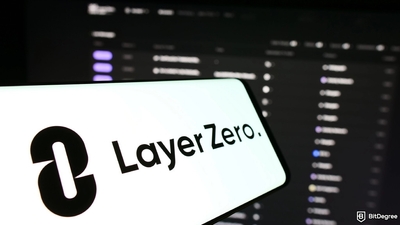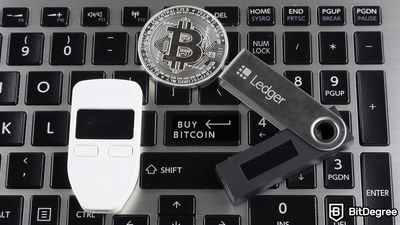Key Takeaways
- Selling crypto from a cold wallet provides top-level security, but involves extra steps like transferring funds to an exchange.
- Platforms like Ledger offer integrated solutions with Ledger Live, making it easier to sell crypto directly from cold storage.
- Alternatives to selling from cold wallets include using exchanges like Binance, Kraken, and Bybit, which offer convenience but may be less secure for long-term storage.
Free Airdrop Season 7 is LIVE! Answer fun questions or do simple tasks to earn rewards from the $30K BitDegree prize pool. Participate Now ! 🔥
Selling cryptocurrency from a cold wallet can feel like a complex task, especially for those who are more familiar with hot wallets or exchanges. But knowing how to sell crypto from cold wallet setups like Ledger or Trezor doesn’t have to be daunting. Cold wallets are designed with security in mind, and while they add an extra layer of protection for your funds, they also require a slightly different process when it comes time to sell.
In this guide, I'll walk you through the best ways to sell your crypto using these popular cold wallets. Whether you're using Ledger Live, Trezor Suite, or even a paper wallet, expect to learn how to get money out of a crypto wallet safely and efficiently.
By the time you’re done reading, you’ll feel confident navigating the process—without compromising on security. Get ready to discover some key tips for keeping your remaining assets safe and explore a few alternatives to selling directly from your cold wallet. Let’s dive in!

Did you know?
Subscribe - We publish new crypto explainer videos every week!
What is Chainlink? LINK Explained Simply (ANIMATED)


Table of Contents
- 1. How to Sell Crypto From Cold Wallet: The Best Wallet Options
- 1.1. Ledger
- 1.2. Trezor
- 2. How to Transfer Crypto to Cold Wallet
- 3. How to Sell Crypto Using Ledger Live
- 4. How to Sell Crypto Using Trezor Suite
- 5. How to Sell Crypto from a Paper Wallet
- 6. Why Use Cold Wallets?
- 7. Best Practices for Safeguarding Your Funds After a Sale
- 8. Alternatives to Selling From Cold Wallets
- 8.1. Binance Web3 Wallet
- 8.2. Bybit Wallet
- 8.3. Kraken Wallet
- 9. Conclusions
How to Sell Crypto From Cold Wallet: The Best Wallet Options
Before we start diving deeper into how to sell crypto from cold wallet devices, I want to show you which product I would recommend. With so many options in the market, it is easy to get confused when deciding what to get. That’s why I will help you make a more educated decision by showing you two of the best cold wallet providers and what makes them great.
Latest Deal Active Right Now:Valentine's Day offer: save up to 50% on ALL best-selling Trezor bundles! Don't miss this sale & secure a huge discount now.
Ledger
Ledger is one of the most trusted names in the world of crypto cold wallets, and for good reason. They’ve been around since 2014, and their products are known for combining top-notch security with a user-friendly experience. The Ledger Nano S Plus and Ledger Nano X are two of their most popular devices, both designed to securely store your private keys offline, away from potential hackers.
What I like about Ledger is how easy it is to manage multiple cryptocurrencies, thanks to their app, Ledger Live, which lets you send, receive, and monitor your crypto all in one place.
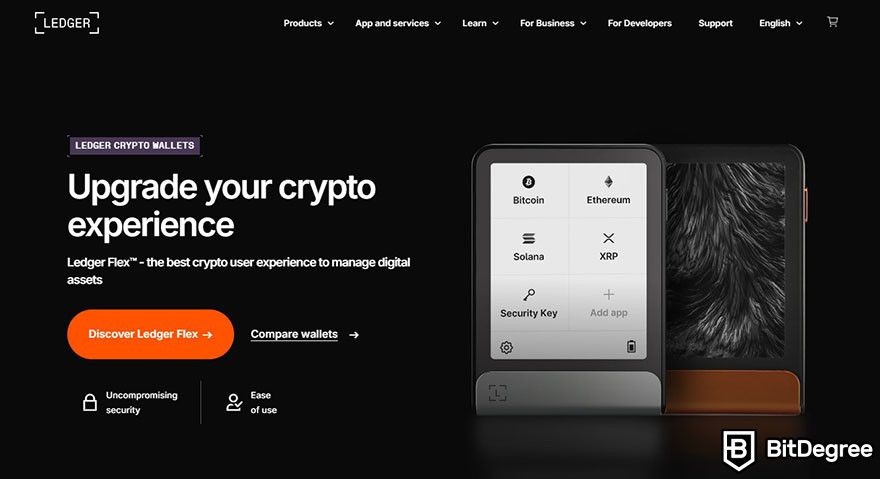
If you’re wondering how to get a cold wallet, Ledger makes it pretty straightforward. You can order directly from their website or through authorized retailers, but I always recommend buying straight from the source to avoid any security risks. It’s an investment in peace of mind, and you can often find deals or bundles that make it more affordable.
When it’s time to figure out how to sell crypto from cold wallet devices using Ledger, you’ll find the process is pretty intuitive with Ledger Live which I will show you later on.
Trezor
Trezor was actually the world’s first hardware wallet, making it a pioneer in the space of cold storage for crypto. Since launching in 2013, it has built a reputation for being highly secure and easy to use. Trezor offers several wallet models, including the Trezor One and the more advanced Trezor Model T.
The Model T comes with a touchscreen for a more streamlined experience, while the Trezor One is a solid, more budget-friendly option. Both provide excellent protection by keeping your private keys offline, and they support a wide variety of cryptocurrencies.
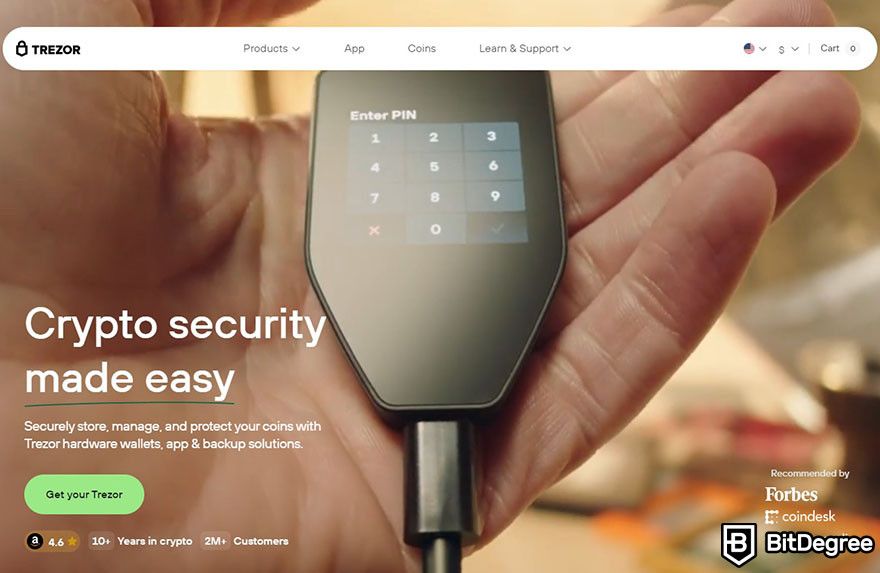
If you’re thinking about how to get a cold wallet from Trezor, it is also pretty easy. Like with Ledger, I always suggest purchasing directly from their official website to avoid tampered devices. You can also grab one from authorized resellers, but buying from the source guarantees you're getting the real deal.
As for how to sell crypto from cold wallet using Trezor, the process involves connecting it to Trezor Suite, their companion app. It’s straightforward, and I’ll walk you through every step later. But all in all, Trezor’s long-standing reputation and ease of use make it a great choice for securely managing and selling your crypto.
How to Transfer Crypto to Cold Wallet
Another thing you need to know before withdrawing money from your hardware wallet is how to transfer crypto to cold wallet. After all, they’re cold wallets not because you leave them empty without any crypto coins, right? Anyways, here are the general steps on how to move crypto to cold storage from your exchange account:
Step 1: Connect your hardware wallet to its companion app (eg. Ledger Live)
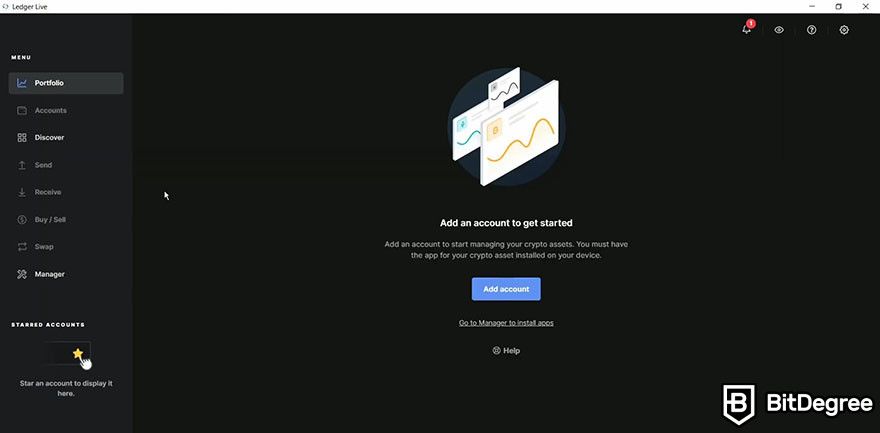
Step 2: Find the menu where you can receive crypto on the app. For example, on Ledger Live, you can go to “Receive”.
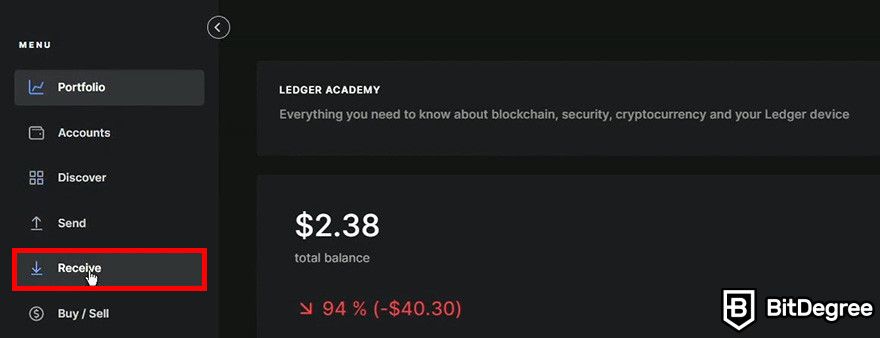
Step 3: Your hardware wallet and app will generate the wallet address. You can copy it or write it down somewhere.
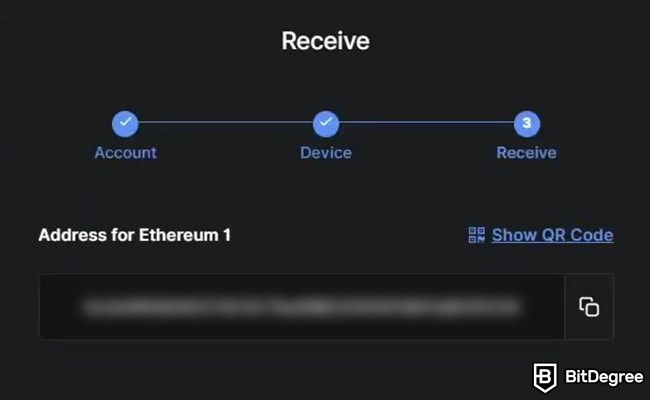
Step 4: Open your crypto exchange account and go to your assets page to send your crypto. For example, on Binance, head over to “Assets” then “Withdraw”.

Step 5: Paste or type down the wallet address you get earlier in the destination box.
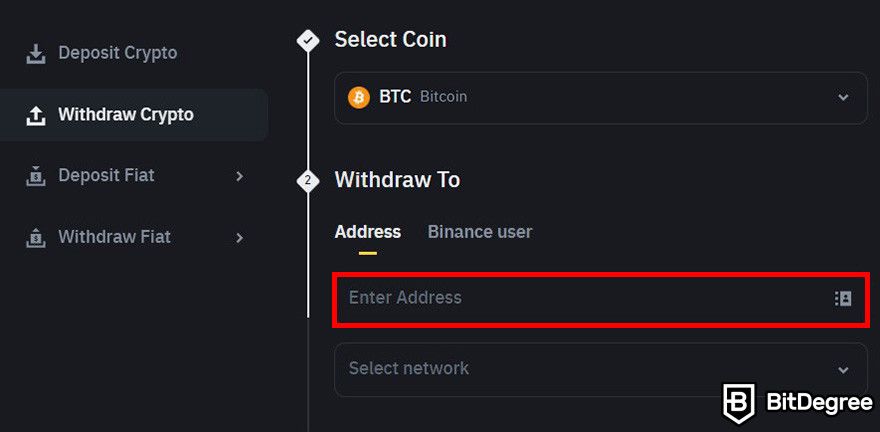
Step 6: Enter other necessary details, such as the network and the amount you wish to transfer.
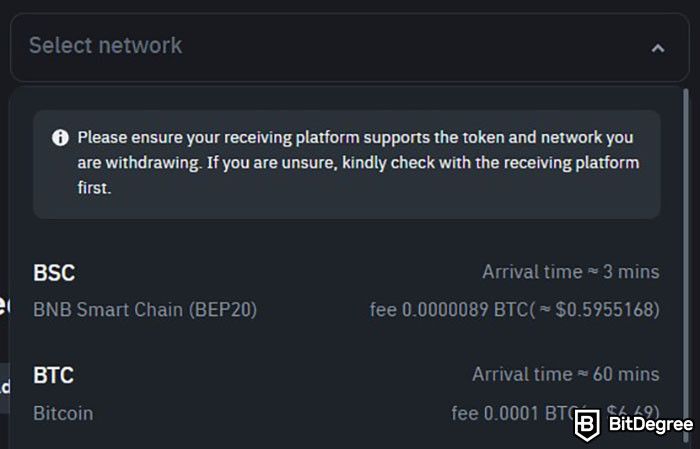
Step 7: Finalize the transaction and wait for the crypto to turn up in your hardware wallet.
Keep in mind that this process might differ depending on what device and crypto exchange you’re using. Also, make sure to choose the right network before sending the crypto to your cold wallet. Choosing the wrong network may result in losing funds that you can’t recover. Now, that you have assets stored in your device, you can start learning how to sell crypto from cold wallet.
How to Sell Crypto Using Ledger Live
As I mentioned earlier, Ledger Live is the native companion app for Ledger devices. It acts as the interface for your hardware wallets, letting you access various advanced features, including buying and selling your crypto assets. If you’re wondering how to get money out of crypto wallet devices, specifically from Ledger, this app is the answer. You can install the Ledger Live app on your desktop or mobile phone.
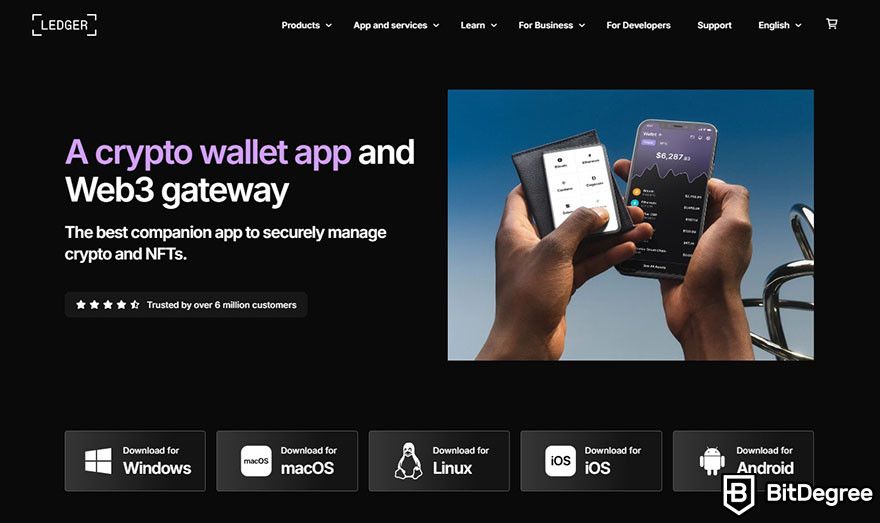
Additionally, Ledger is partnering with Coinify and BTC Direct as the third-party crypto-market providers. Both are decent solutions to sell your cryptocurrency. Just make sure to check if your area is eligible for their services and if the fiat currency you want is supported.
In this section, I will show you the process using Coinify as an example. Now, without further ado, let’s get to the step-by-step guide on how to sell crypto from a cold wallet using Ledger Live, starting with creating a new Coinify account:
Step 1: Open your Ledger Live app and go to “Buy/Sell” then choose the “Sell” tab.

Step 2: Choose the crypto asset you want to sell and the account from the drop-down menu. Then click “Continue”.
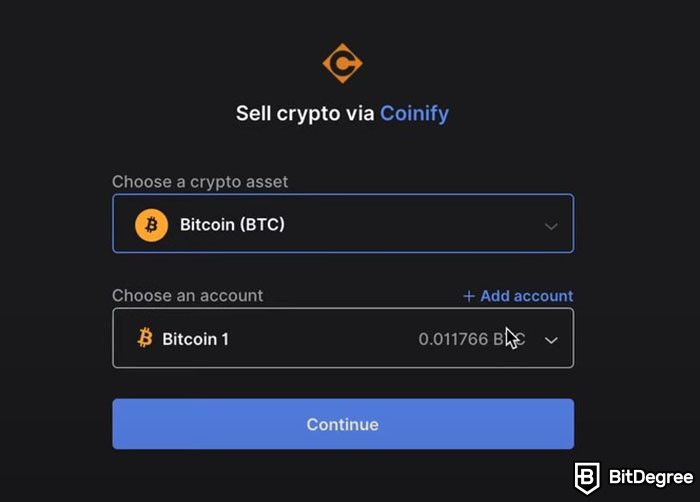
Step 3: Connect and unlock your device. Then open the Coinify application.
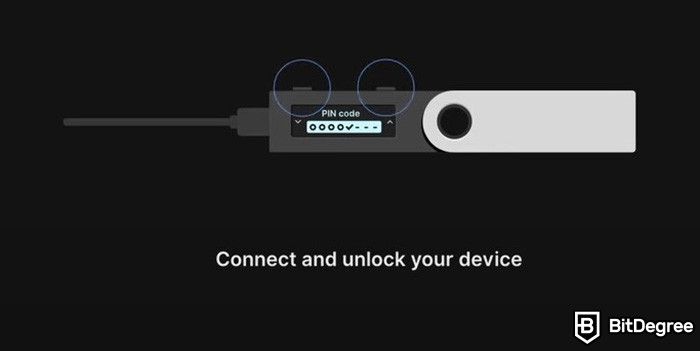
Step 4: On the “Get Started” page, enter the amount of crypto you wish to sell and choose the fiat currency you want to receive. You’ll see the estimated quote for your transaction in the “You Get” box. Once finished, click “Sell Now”.
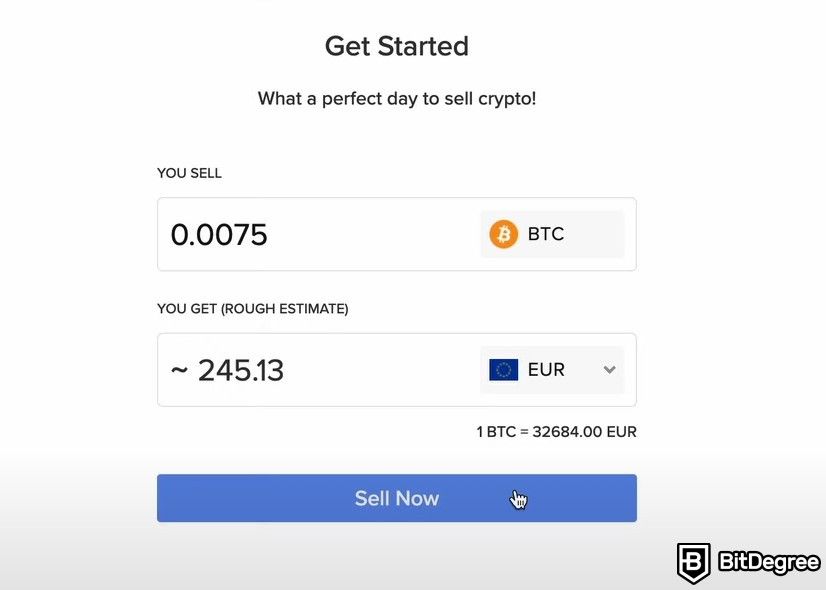
Step 5: Log in to your Coinify account by entering your email and password. If you haven’t got an account yet, you can also create a new one in this step by clicking on “Create account”.

Step 6: Click “Continue” on the Get Started page. After that, choose the bank account to get the funds transferred. If you don’t already have one, click “Add account” and input your bank account information.

Step 7: Review the order summary, and click on “Confirm Order” after ticking the checkbox if you accept Coinify’s terms and conditions.
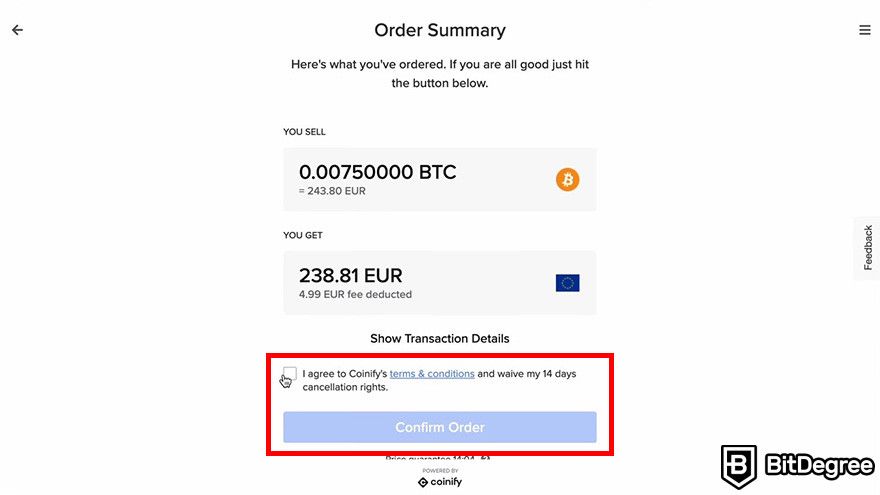
Step 8: Open the exchange app on your Ledger device and verify the transaction. Then press both buttons to accept the transaction.
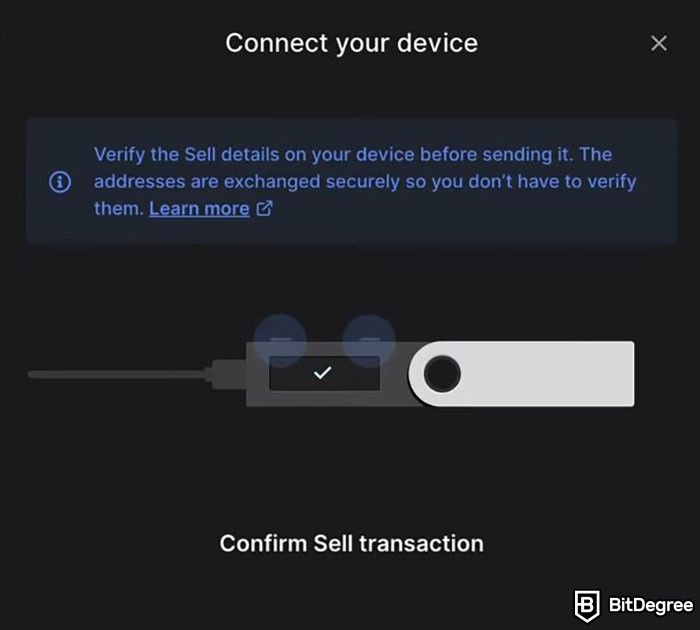
And there you have it! You have successfully learned how to sell crypto from cold wallet devices using Ledger Live. One thing I want to highlight from this process is that the estimated quote you see when you enter the amount to sell is only guaranteed for 15 minutes. So, if you take longer to finish the selling process, you may get a different rate.
How to Sell Crypto Using Trezor Suite
Now, let’s talk about how to sell crypto from cold wallet using Trezor Suite, the companion app for Trezor hardware wallets. This app lets you do essential activities with your Trezor devices, including managing assets, trading, and even staking crypto.
When it comes to selling crypto from your cold wallet devices, Trezor is partnering with Invity who carefully selected and vetted third-party providers to facilitate your transactions. These include BTC Direct, Paybis, Banxa, and MoonPay.
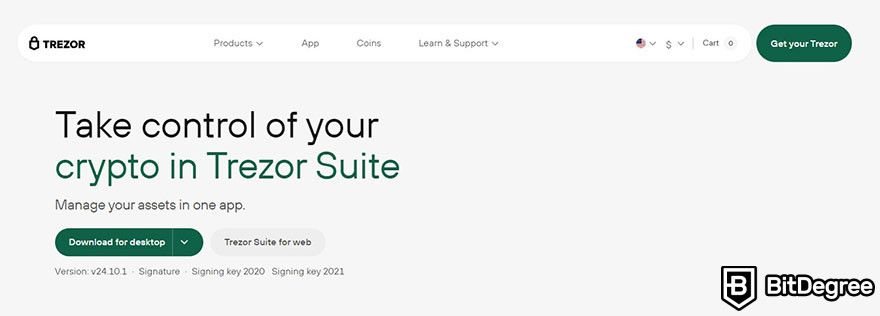
You can access Trezor Suite on your desktop and mobile devices. What’s great is that the app is also available via web browsers, meaning that you don’t have to install the app on your device. This makes it easier for you to use the app on the go.
That being said, let’s go to the step-by-step guide on how to sell crypto from cold wallet devices using Trezor Suite:
Step 1: Connect your Trezor wallet to your device, open the Trezor Suite app, and go to "Accounts".

Step 2: Open an account holding the cryptocurrency you wish to sell then click "Trade" and go to the "Sell" tab.
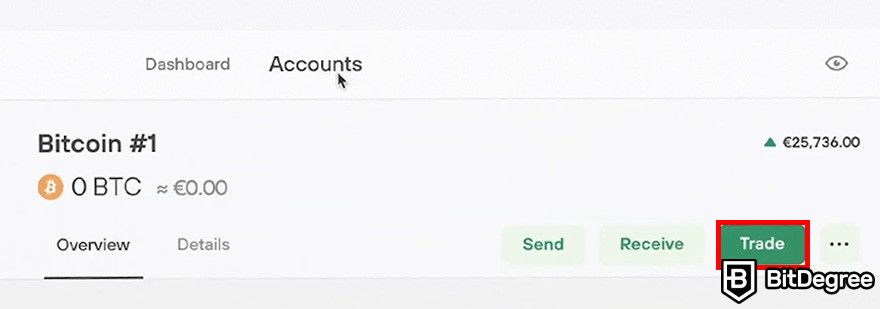
Step 3: Enter how much cryptocurrency you wish to sell. You can also enter the fiat value.

Step 4: Set a fee according to how quickly you want the transaction to be processed. The app lets you choose from “Low”, “Economy”, “Normal, “High”, or even set a custom fee.

Step 5: Choose the region you wish to see offers for. Different providers operate in different regions, so it is best to choose your local area for a smoother verification process.

Step 6: Click “Show offers” and you may see several different offers and possibly different payment methods for your sale. Once you’ve found the offer you like, click on “Get this offer”.

Step 7: Choose the account to get your funds transferred. Alternatively, you can add a new account here. After that, click “Proceed”.

Step 8: Review the transaction details and click “Confirm on Trezor & Send”.
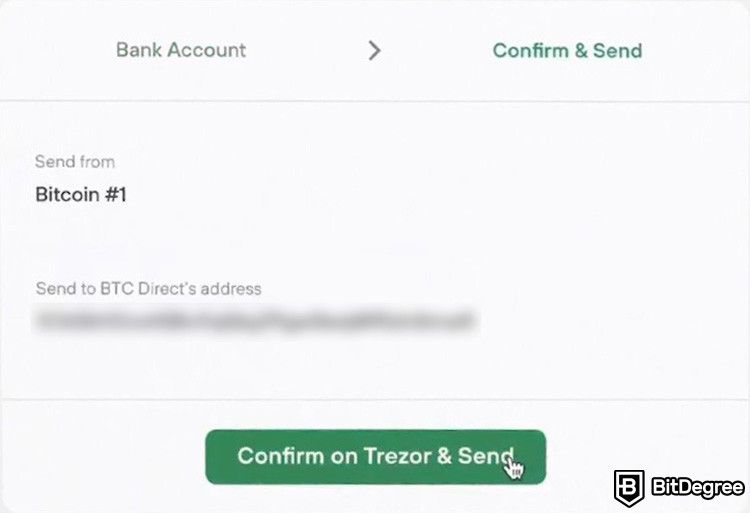
Step 9: Once you confirm the sale on your Trezor device, you can click “Send” to finalize the process.
That’s it! In general, the process is not that different than selling crypto using Ledger Live. Keep in mind that some providers may require your personal identification and sensitive information to comply with AML/KYC regulations.

|

|
|
|---|---|---|
| Hardware | Hardware | |
| Best for Storing, Sending and Receiving a Wide Range of Cryptocurrencies | Best for Safely Storing, Sending, and Receiving Different Cryptocurrencies | |
| All Trezor One Coupons | See All Coupons of Best Wallets | |
| A leading hardware cryptocurrency wallet. | One of the safest hardware wallets on the market. | |
|
Visit site
Read review |
See TOP10 Brands
Read review |
How to Sell Crypto from a Paper Wallet
Now that we’ve covered how to sell crypto from cold wallet devices like Ledger and Trezor, let’s move into something a bit different; paper wallets. A crypto paper wallet is a piece of printed paper with public and private keys[1]. Usually, they're represented by QR codes that you can scan to access your assets. Because they’re just pieces of paper, paper wallets are not vulnerable to hacking attacks. This makes paper wallets one of the most secure wallet formats out there.
However, there are several downsides to using this type of crypto wallet. Paper wallets can be lost or damaged, which could result in the loss of your funds. They also have limited functionality compared to more sophisticated wallets. Additionally, paper wallets may not be suitable for those who trade crypto frequently, since it would be a bit troublesome.
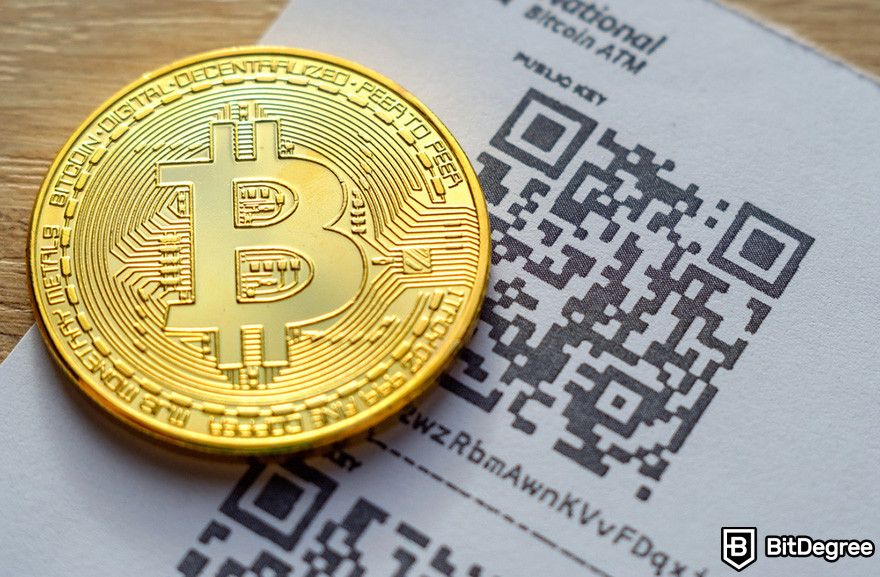
Regardless, this can be a good cold storage option, especially if you don’t mind the inconvenience. That said, let’s take a look at how to sell crypto from a paper wallet:
Step 1: Select a reliable software wallet like the Mycelium Bitcoin Wallet to import your paper wallet's private key.
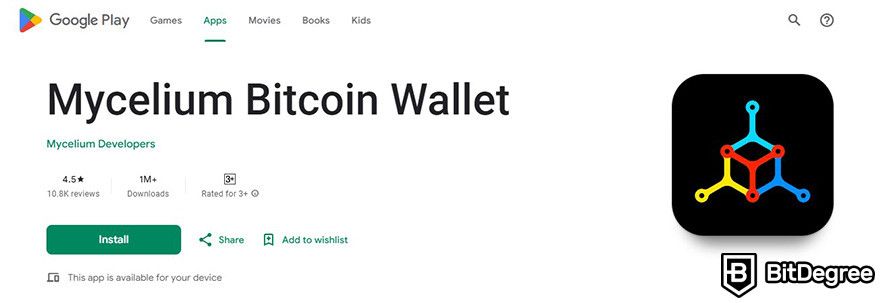
Step 2: Open your software wallet and locate the option to “sweep” or import a private key. Then, scan the QR code on your paper wallet or manually enter the private key to import your crypto.

Step 3: After importing, check your software wallet to ensure your crypto balance is available.

Step 4: Log in to your exchange account. If you don’t have one, sign up for an account on a cryptocurrency exchange like Binance or Kraken.

Step 5: Find the deposit address for the cryptocurrency you want to sell on the exchange.

Step 6: Send your crypto from the software wallet to the exchange’s deposit address.
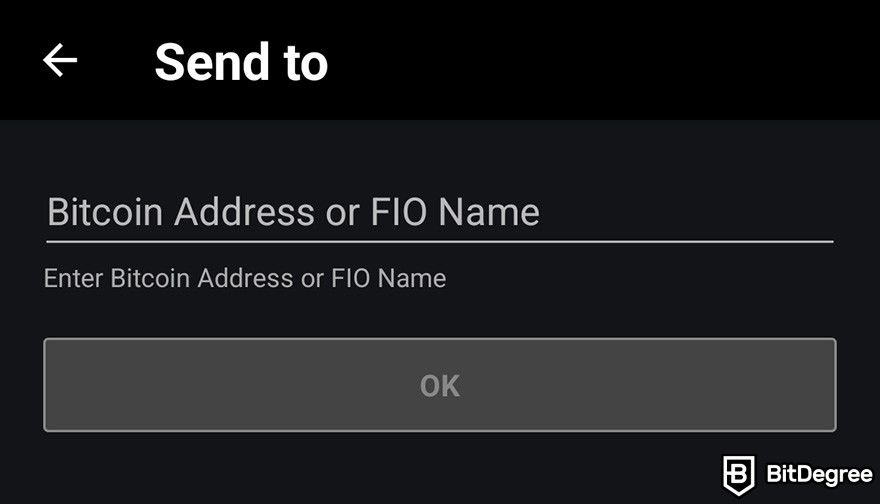
Step 7: Once the funds arrive in your exchange account, navigate to the trading section to sell your crypto.
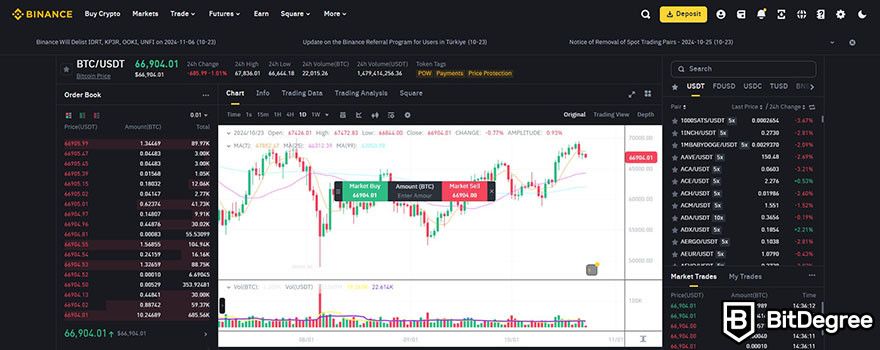
Step 8: After the sale, withdraw your money to your bank account or another wallet, depending on the exchange’s options.
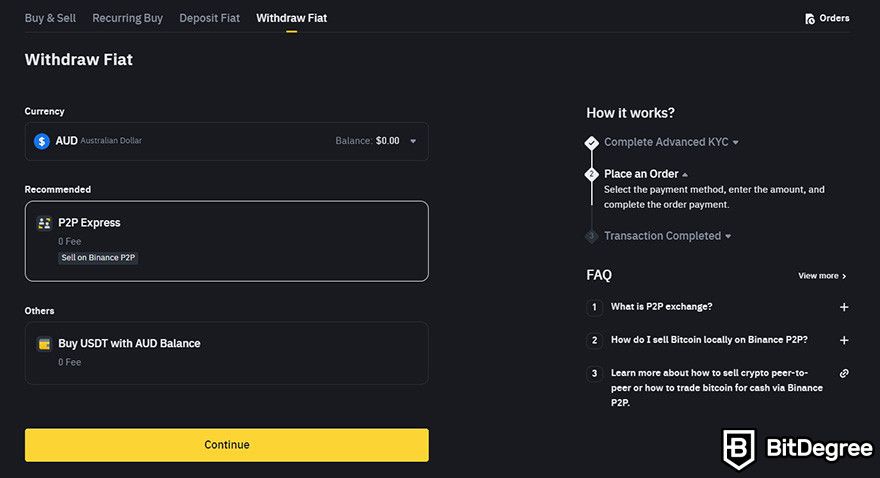
As you can see from my tutorial, you also need to learn how to take crypto off exchange platforms by using their trading features when using paper wallets. Selling crypto from a paper wallet may require a longer process, but, it can be a suitable choice for long-term storage of cryptocurrency.
Why Use Cold Wallets?
When it comes to storing cryptocurrency, security is the number one concern, and cold wallets are one of the best ways to protect your digital assets. If you're wondering why someone should choose a cold wallet, the answer boils down to the offline nature of these wallets, which keeps your private keys—and therefore your crypto—safe from hackers and malware.
Devices like Ledger Nano X and Trezor Safe 5 are some examples of cold wallets. They are dedicated cryptography devices to generate and store private keys and sign transactions[2]. Unlike hot wallets, which are connected to the internet and constantly at risk of cyberattacks, cold wallets are entirely offline.
This makes them an incredibly secure option, especially if you’re holding a significant amount of crypto for the long term. I like to think of a cold wallet as a vault: it might take a bit more effort to access, but that added protection can make all the difference in a world where hacking and phishing schemes are common.
Now, if you're asking how to get a cold wallet, there are several options. Popular choices include hardware wallets like Ledger and Trezor, which I discussed earlier, or even a paper wallet for those who prefer a truly offline option. Hardware wallets are easy to purchase directly from the manufacturers' websites, and it’s the safest way to ensure you’re getting an untampered device. Paper wallets are free, but you have to generate and print them yourself, making them a bit more complex to manage.
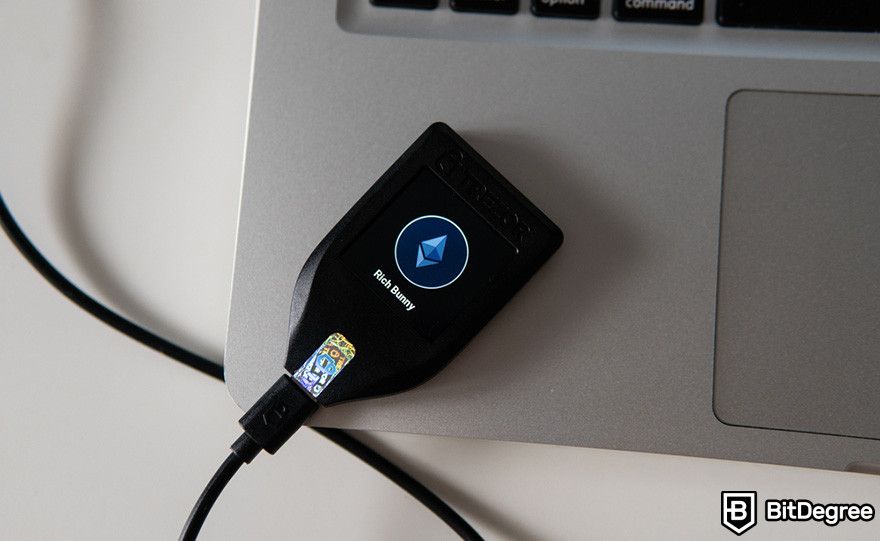
Once you’ve got your cold wallet, it’s important to know how to transfer crypto to cold wallet properly. Whether you’re using a hardware wallet or a paper wallet, the process is fairly straightforward. You’ll generate a deposit address from your cold wallet, then use your hot wallet or exchange to send your crypto to that address.
The key is making sure you enter the address exactly right—because with blockchain transactions, there’s no way to reverse an incorrect transfer. Once the crypto is in your cold wallet, it's essentially locked away from the internet, where no one but you can access it.
But you might be wondering, if cold wallets are so secure, are they still practical for people who plan to actively sell their crypto? The answer is yes. In fact, knowing how to sell crypto from cold wallet can be a smart strategy if you want to protect your assets until the moment you decide to sell.
While it’s true that selling from a cold wallet involves a couple of extra steps, like transferring the funds to an exchange first, the added security makes it worth it. Plus, many hardware wallets like Ledger and Trezor integrate with software that makes these transfers simple and intuitive.
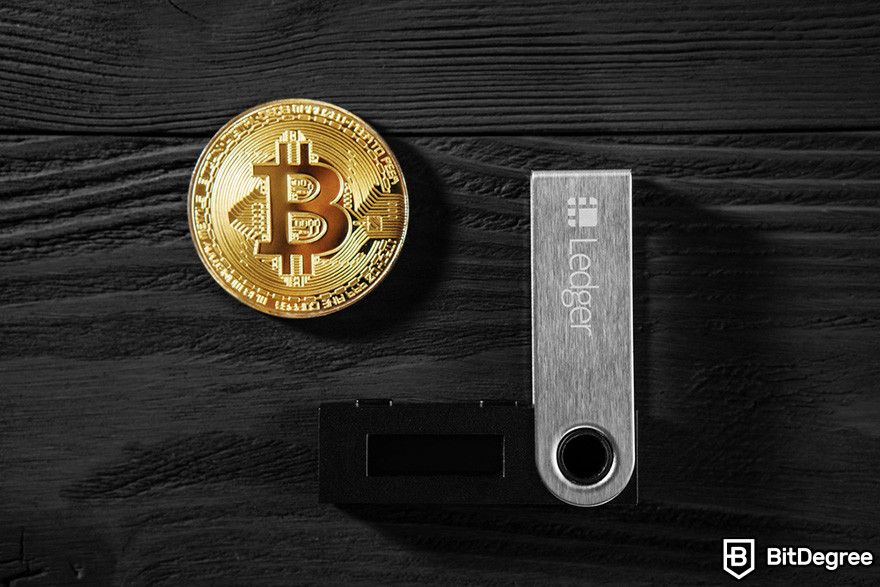
If you're planning to hold onto your crypto for a while and don’t need to access it daily, cold wallets are a no-brainer. Even if you intend to sell eventually, understanding how to sell crypto from cold wallet means you can enjoy the best of both worlds—strong security for your long-term holdings and the flexibility to sell when you're ready.
To sum it up, choosing a cold wallet is about peace of mind. Crypto markets can be volatile, but that doesn't mean your assets should be at risk from online threats. Cold wallets give you the confidence to hold and manage your crypto with maximum security, ensuring that your funds are protected whether you're storing them or preparing to sell them.
Best Practices for Safeguarding Your Funds After a Sale
Once you've sold your crypto, it's important to take steps to ensure your remaining funds are safe and secure. Even though the selling process might be complete, you don’t want to let your guard down when it comes to protecting your assets. Here are some best practices that I follow to safeguard my funds after a sale.
- Move Your Remaining Funds to Cold Storage
If you still have crypto left after the sale, consider moving it back into cold storage for added security. Knowing how to move crypto to cold storage—whether it’s a hardware wallet like Ledger or Trezor, or even a paper wallet—is crucial for keeping your assets offline and out of reach from hackers. - Double-Check Transaction Confirmations
After you've sold your crypto, take a moment to verify that your sale has been processed correctly. Check both the exchange and your wallet to ensure the transaction went through as expected, and that your funds are either withdrawn or safely transferred.
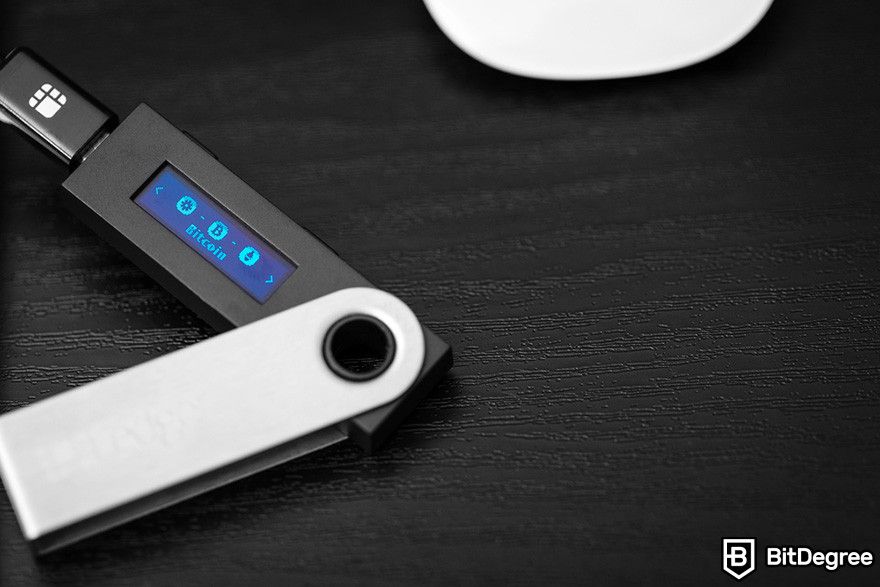
- Transfer Funds to Your Bank Carefully
When you're withdrawing fiat from an exchange, pay close attention to the bank account details you enter. This ensures you won’t run into issues when you're trying to figure out how to get money out of crypto wallet sales. Any mistake in your bank information could delay the transfer process or even result in funds going to the wrong account. - Re-Secure Your Cold Wallet
If you’re using a cold wallet to store the rest of your crypto, make sure it’s updated with the latest firmware and that you're following best practices, like keeping your recovery phrase in a safe place. If you're new to cold wallets, knowing how to get a cold wallet securely from the manufacturer’s website is important to avoid tampered devices.
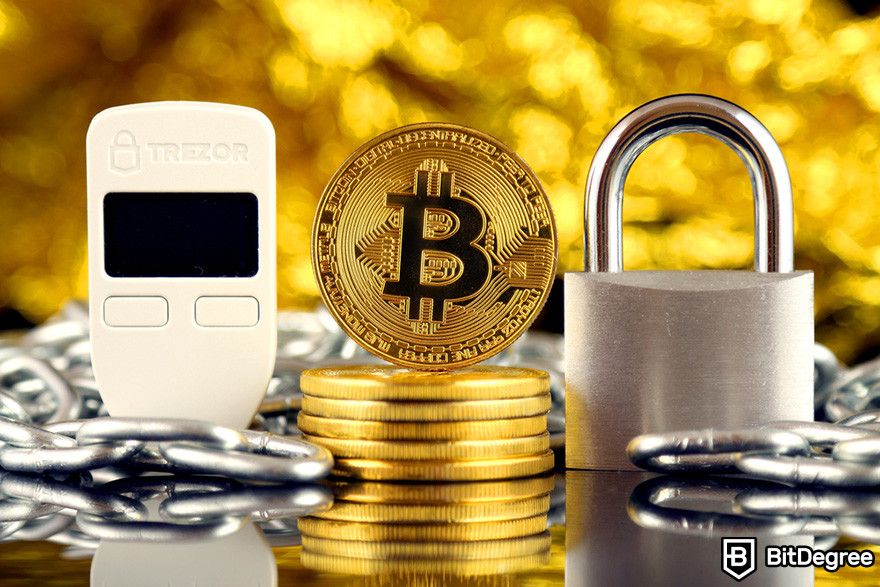
- Stay Vigilant Against Scams
After selling crypto, you may receive phishing attempts or scam messages. Be cautious of any suspicious emails or links that try to lure you into entering your wallet information or private keys. If you're uncertain about any message, it's better to ignore it.
Following these steps will help ensure that your funds remain safe, whether you're figuring out how to sell crypto from cold wallet again or simply holding onto your remaining assets for the long term.
Alternatives to Selling From Cold Wallets
If selling crypto directly from a cold wallet seems a bit too complicated or you’re looking for other options, there are plenty of alternatives. Many people use popular exchanges like Binance, Bybit, and Kraken to buy, sell, and store their crypto. Hot wallets like these are known to have better user interface design and offer more convenience, though it’s always important to know how to take crypto off exchange platforms and move it into cold storage for better security. Here’s how they stack up:
Binance Web3 Wallet
Binance is one of the largest cryptocurrency exchanges in the world, offering an extensive selection of crypto to trade. If you're not sure how to sell crypto from cold wallet, using Binance’s platform might be a more familiar route. They also offer the Binance Web3 Wallet, which integrates directly with the exchange, allowing you to store and sell your crypto easily.
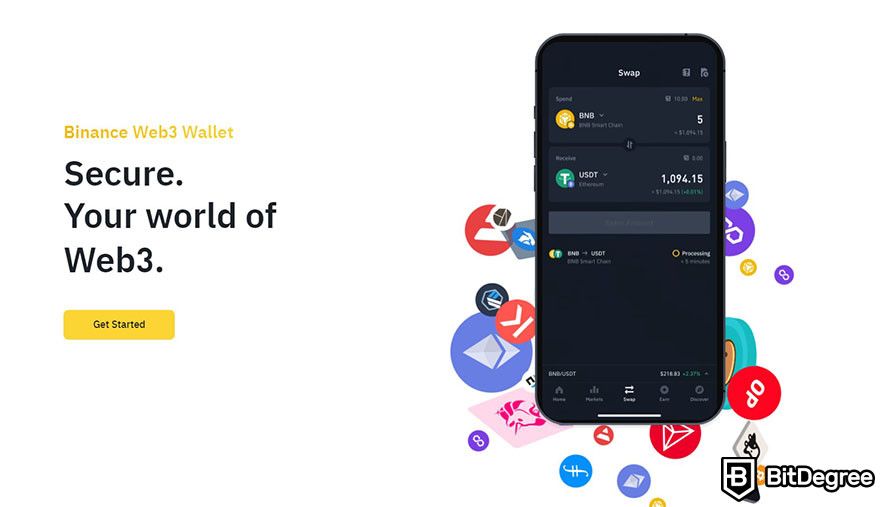
While it’s convenient, I always suggest using Binance Web3 Wallet for short-term storage and learning how to move crypto to cold storage when you want extra security.
If you’re looking for a quick way how to get money out of crypto wallet, Binance Web3 Wallet is one of the most seamless options. Once you’ve sold your crypto on the exchange, you can withdraw your funds directly to your bank account.
Bybit Wallet
Bybit is another popular platform, known for its user-friendly interface and competitive fees. Bybit Wallet is integrated into the platform, so you can store your crypto there and sell it without needing to transfer funds between wallets. It’s a great option if you prefer simplicity, but like with Binance, I recommend moving larger holdings off the exchange when not actively trading.
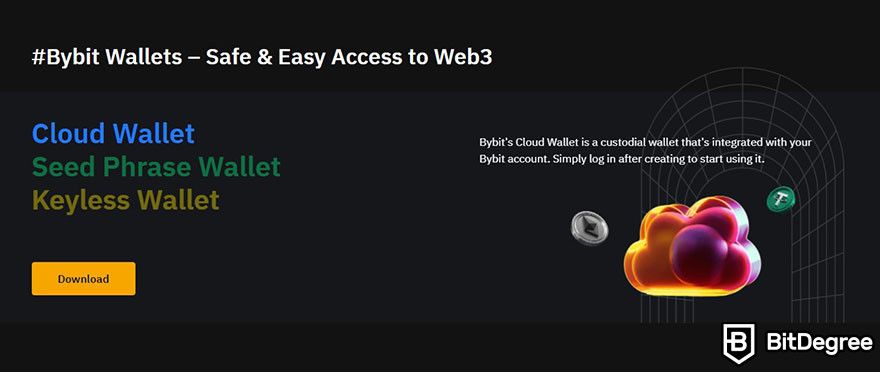
While Bybit is secure, using a cold wallet is always a good practice. Once you know how to sell crypto from cold wallet, you can transfer your crypto back and forth between your cold storage and Bybit Wallet as needed.

Did you know?
Subscribe - We publish new crypto explainer videos every week!
What is Basic Attention Token (BAT)? Brave Browser EASILY Explained



- User-friendly design
- Robust security
- Long battery life

- A brand-new design
- Industry-leading security
- Coin, token and NFT storage

- Supports 1,000+ crypto assets
- Easy navigation
- Open-source
Kraken Wallet
Kraken is another excellent option for those who want to avoid the complexity of selling directly from a cold wallet. With Kraken Wallet, you can store your crypto on the platform and sell it without transferring it to an external wallet. However, like the other exchanges, it’s essential to know how to move crypto to cold storage if you’re holding assets long-term.
Kraken also offers a straightforward process for withdrawing funds, making it easy to figure out how to get money out of crypto wallet transactions after you’ve made a sale.

In short, while selling from cold wallets offers the best security, exchanges like Binance, Bybit, and Kraken offer convenient alternatives. Just make sure to always prioritize security by moving large amounts of crypto to cold storage when you're not actively trading.
Conclusions
Selling crypto from a cold wallet might seem a bit complicated at first, but once you get the hang of it, it's a great way to keep your assets secure while maintaining the flexibility to sell when needed. Whether you’re using Ledger, which integrates seamlessly with Ledger Live, or you prefer exchanges like Binance, Bybit, or Kraken, each option has its pros and cons.
Knowing how to sell crypto from cold wallet setups like Ledger or Trezor can give you the best of both worlds—security and accessibility. If you're still wondering how to get a cold wallet, I'd recommend going directly to trusted sources like Ledger's website. And if you're trading more frequently, using custodial wallets might offer the convenience you're looking for.
These exchanges make it easy to sell your crypto, though it’s always wise to know how to sell crypto from cold wallet in case you want to prioritize security in the future. Ultimately, whether you're using Ledger Live or one of these exchanges, understanding your options and staying secure is key to navigating the crypto world.
The content published on this website is not aimed to give any kind of financial, investment, trading, or any other form of advice. BitDegree.org does not endorse or suggest you to buy, sell or hold any kind of cryptocurrency. Before making financial investment decisions, do consult your financial advisor.
Scientific References
1. Jokić S.: Analysis and Security of Cryptocurrency Wallets;
2. Rezaeighaleh H., Zou C. C.: New Secure Approach to Backup Cryptocurrency Wallets.

